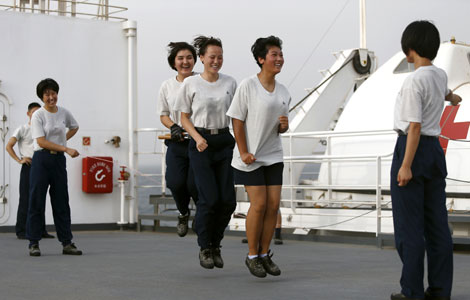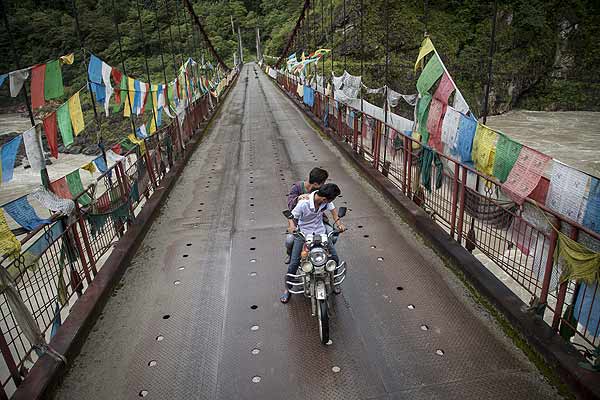'Ice wall' test at leaking Fukushima nuke plant
Updated: 2013-09-05 16:00
(Xinhua)
|
|||||||||||
TOKYO - The Japanese government will soon conduct a test to build a frozen wall at the leaking Fukushima Daiichi nuclear power plant, as part of a wider plan to prevent leaking radioactive water flowing into the Pacific Ocean, government officials confirmed Thursday.
The feasibility test will start by mid-October at the earliest and will involve driving steel pipes 30 meters deep into the soil near the No 4 reactor building.
The pipes will surround a 10 meter square area, initially, the officials said, and liquid calcium chloride at minus 40 degrees Celsius will be injected into the pipes to freeze the surrounding soil.
The test is designed to check whether such an "ice wall" is capable of stopping the flow of contaminated groundwater and the duration of the test period will be for five months, said the officials.
Japan's Prime Minister Shinzo Abe, along with Industry Minister Toshimitsu Motegi and other members of the government's nuclear disaster task-force on Tuesday approved the basic plan to construct a 1.4 km-long underground frozen wall around four damaged reactors at the stricken facility.
By freezing the soil around the reactors and creating an ice wall, the government and the task-force believe that groundwater will be prevented from mixing with coolant water that is becoming contaminated after coming into contact with melted nuclear fuel.
Under its current plans and provided that the tests prove to be successful, the wall will be operational by the end of March 2015, government officials confirmed Thursday.
The government has come under increasing pressure to take a more proactive role in tacking the Fukushima crisis after a series of gaffes by the plant's operator, Tokyo Electric Power Co. (TEPCO) , including hugely inaccurate reporting of radiation levels, shoddy efforts to patch up a leaking tank responsible for 300 tons of toxic water flowing freely into the Pacific, and failing to detect the leak in the first place.
Related Stories
High-radiation spots found at Fukushima plant 2013-08-23 14:03
Japan to raise rating for Fukushima leaks 2013-08-21 11:20
Fukushima plant leaks 300 tons of radioactive water 2013-08-21 08:03
Today's Top News
Ex-railway deputy chief pleads guilty
Deal ensures supplies of natural gas
Campaign launched against child abuse
Auditor to monitor family planning fines
Xi, Putin meeting to focus on 'mega projects'
The white elephant in the room
China rejects building allegations
US divided over Syria attack
Hot Topics
Lunar probe , China growth forecasts, Emission rules get tougher, China seen through 'colored lens', International board,
Editor's Picks

|

|

|

|

|

|





